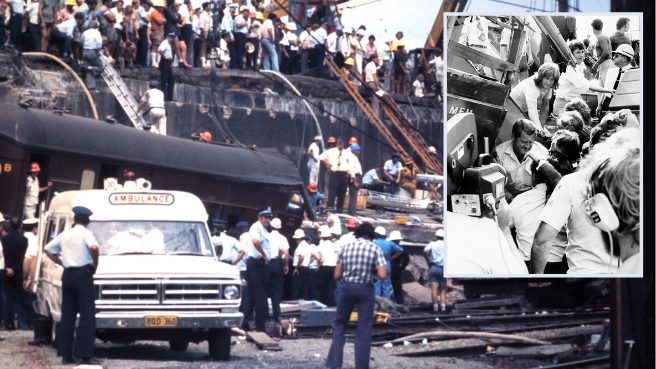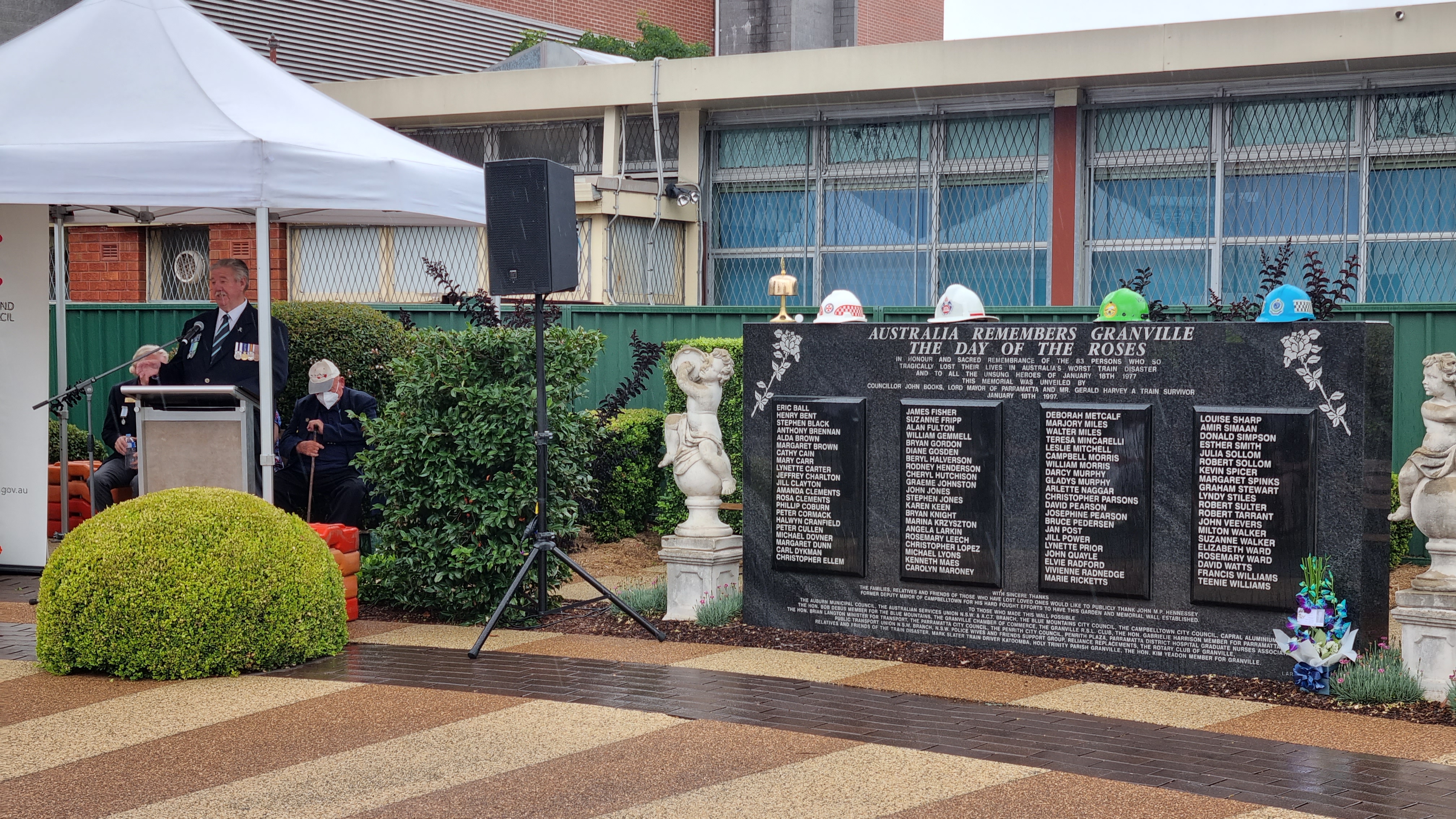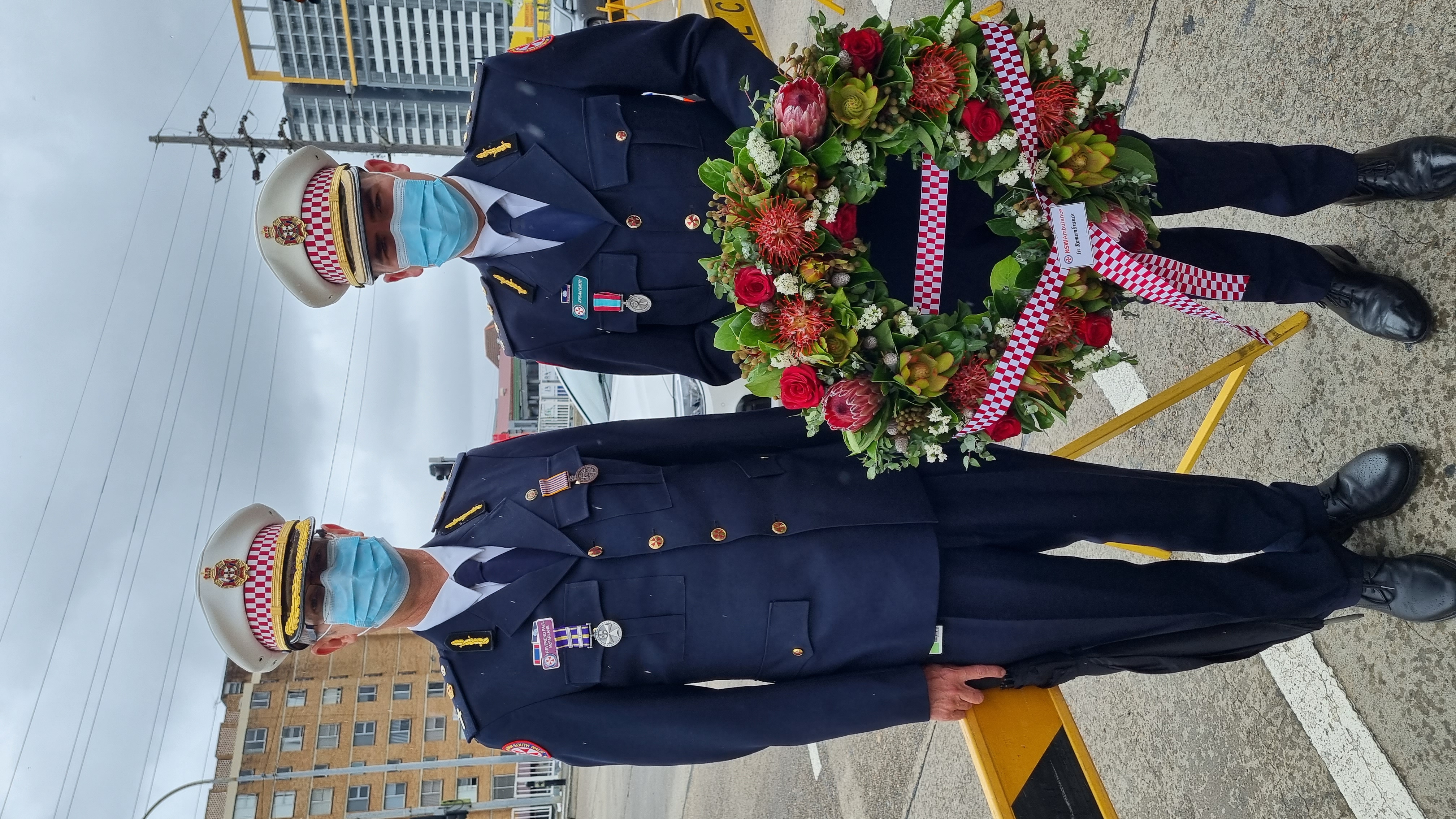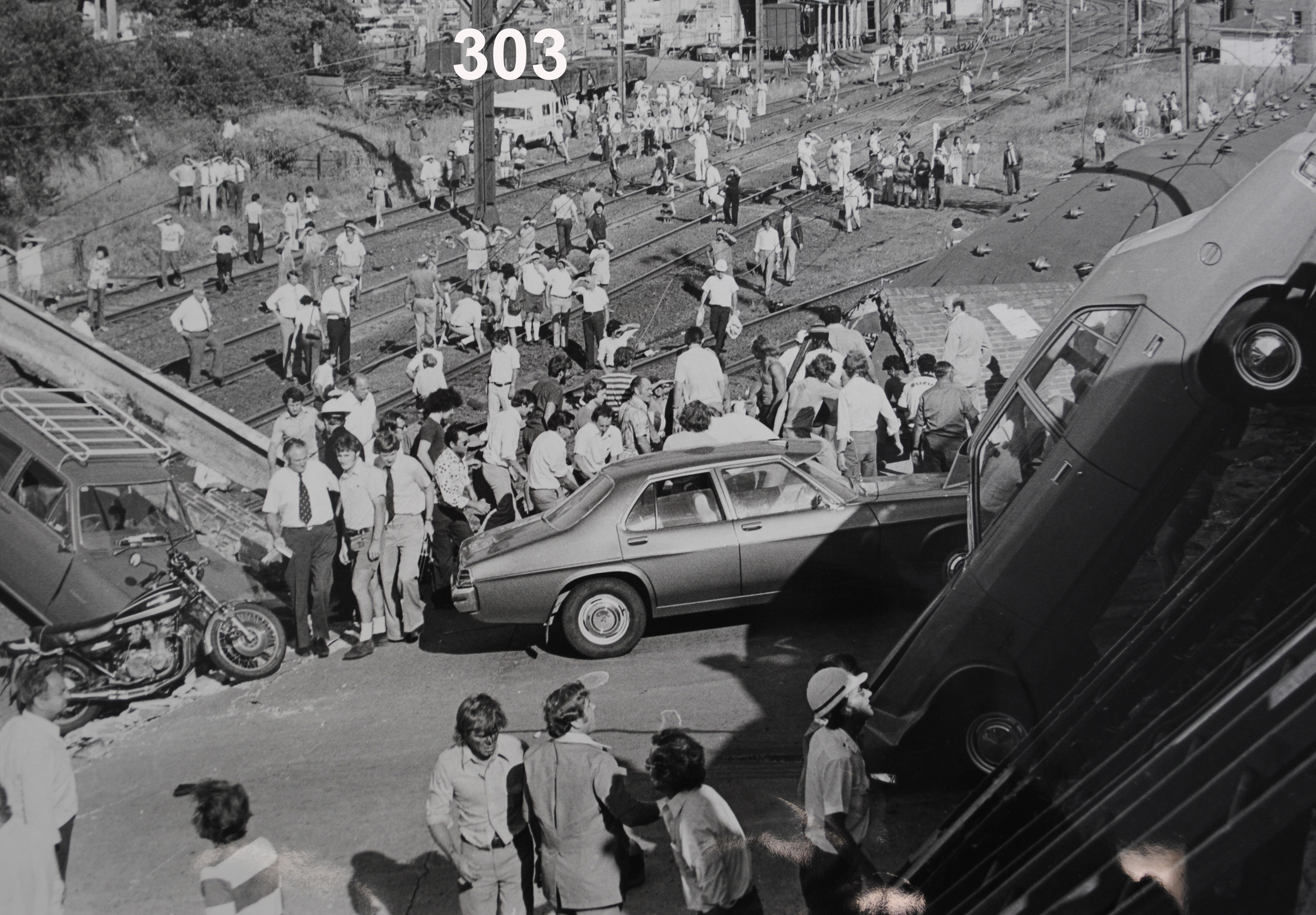
Amidst a scene of total chaos and devastation, Gary Raymond APM OAM was there to answer questions.
They came from fellow rescuers wanting updates on the welfare of the injured, and they came from passengers wanting to know what happened to themselves and their loves ones.
But perhaps the toughest question Gary faced while attending to injured passengers at 1977’s Granville Train Disaster was a young woman who asked him this: “Gary, do you think I will ever get married and have a baby after this?”
Gary, who at the time was a police officer after having previously been a NSW Ambulance Officer, responded to the question by saying, “I don’t know. Only God knows.”
Found curled up and squashed by a damaged carriage, the woman had suffered significant head, chest and pelvic injuries. One of her legs had also been crushed.
“As the helicopter took her to hospital, I was actually thinking that she would just be lucky to survive,” he said.
A few years later however, something amazing happened. Gary was reunited with the woman on a TV show and she had a young daughter who was in attendance.


Today, 45 years after Australia’s worst-ever rail disaster, Gary still has regular catch-ups with this passenger.
It’s a heart-warming story among many other stories on the day that sadly ended in tragedy.
But what has remained consistent is the bonds formed by survivors and rescuers since the disaster, which claimed the lives of 83 people (later changed to 84 after an unborn child had been identified a few years ago).
Those bonds are formed – and strengthened – when many of the survivors, victims’ families and rescuers gather at the crash site each year.
But it’s the milestone of every five years, in particular, when people gather to pay their respects and show their support for one another.
Gary, who is now a NSW Ambulance Legacy Chaplain, said the 45th anniversary (which was held on 18 January) proved no different in being a momentous occasion for those in attendance.
“I call it the advantages of adversity,” he said.
“There is a real bond developed between rescuer and survivor, which is stronger than a lot of other bonds in life.
“They (survivors and victims’ families) get to thank the rescuers for what we did and we get to thank them for supporting us and seeing us through.”

Former NSW Ambulance Paramedic Barry Goobe OAM JP, the first ambo on-scene at the crash site, is another who can speak to the importance of paying respects to those impacted by the disaster.
Barry helped launch the Granville Train Disaster Association, which puts on the annual remembrance event.
“It’s very significant,” Barry said.
“Some people ask why it is on every year, why not every five years….or why not forget it all together… But if you mentioned that to the people that lost people, I wouldn’t want to be standing near them when that’s said.
“They appreciate what has been held in past years and we have been able to keep it going.”
Barry, who said this year’s event was attended by close to 150 people – including representatives from NSW Ambulance – said a bell was tolled as each of the victims’ names was read out.
He reiterated the sentiment of Gary, in that the event is also incredibly important for survivors as well. “These people have got somebody to talk to,” he said.
“Most of the time we can answer questions they have. Questions like, ‘who was that lady lying next to me?’
“This day of the year is very significant to a lot of people and it means a lot to those that lost people.”
